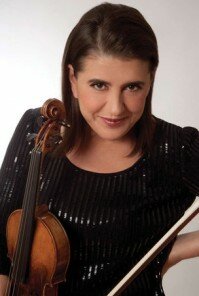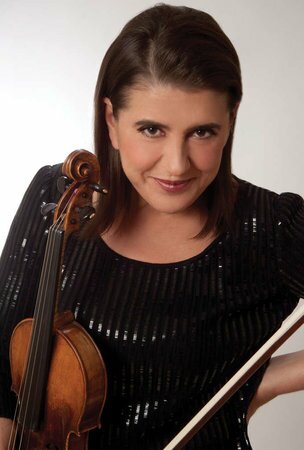Glorious rays of Seattle sun couldn’t keep a sizable crowd out of Benaroya Hall yesterday afternoon. Even more surprising, the diverse audience was there to hear the Seattle Symphony and Chorale perform Mozart’s Requiem, a funeral mass. It’s one of the composer’s most somber, powerful works. In contrast, the other piece on the program, Mendelssohn’s Violin Concerto in E minor, was more suited to the warm spring weather. Full of vivacious energy, this staple of the violin repertoire was performed by renowned violinist Nadja Salerno-Sonnenberg. Seattle Symphony conductor laureate Gerard Schwarz returned to the podium for this program, which had a run of three performances this weekend.

The concert began with Salerno-Sonnenberg’s electrifying performance of the Mendelssohn violin concerto. Striding onto the stage in an unusual, flashy outfit featuring a billowing blouse, tight black slacks, and chunky pumps, Salerno-Sonnenberg exuded the stage presence of a rock star. Her confident, spirited playing suited the virtuosity of the work. Occasionally, she seemed almost too energetic for the orchestra, especially during fast sections of the third movement. Symphony and soloist reached a happy middle ground in the slow, sensitive second movement. Here, the orchestra provided the perfect amount of support for Salerno-Sonnenberg’s soaring tones.
Mozart toiled on the Requiem, his final masterpiece, right up to his death at age 35. The work was posthumously completed by his student Franz Süssmayer. Yesterday’s performance featured four vocal soloists: soprano Jennifer Zetlan, mezzo-soprano Nancy Maultsby, tenor Benjamin Butterfield, and bass-baritone Clayton Brainerd.
All four vocalists gave stellar solo performances, particularly Brainerd in the Tuba Mirum movement and Zetlan in the Communio section. As a quartet, the soloists seemed to struggle with blending the natural timbres of their voices. Although Maultsby’s velvety voice complemented Brainerd’s sonorous tones, Butterfield’s sensitive tenor sounded reedy compared to the full voices of the mezzo-soprano and bass-baritone. At times, Zetlan’s rich soprano was barely audible next to the voices of the other three soloists.
The Requiem calls for a pared-down orchestra with a much smaller string section and fewer winds. Throughout yesterday’s concert, the smaller Seattle Symphony ensemble maintained excellent balance with the full Chorale. The moving Lacrimosa was particularly poignant in its blending of vocal counterpoint with melodies in the string section.
The performance of the Requiem was followed by another sacred choral work by Mozart, Ave Verum Corpus, composed less than a month before he began work on the Requiem.
